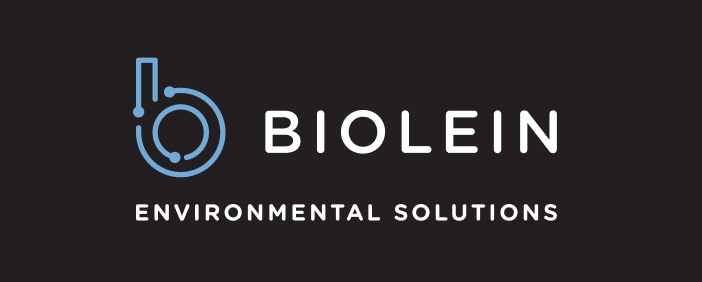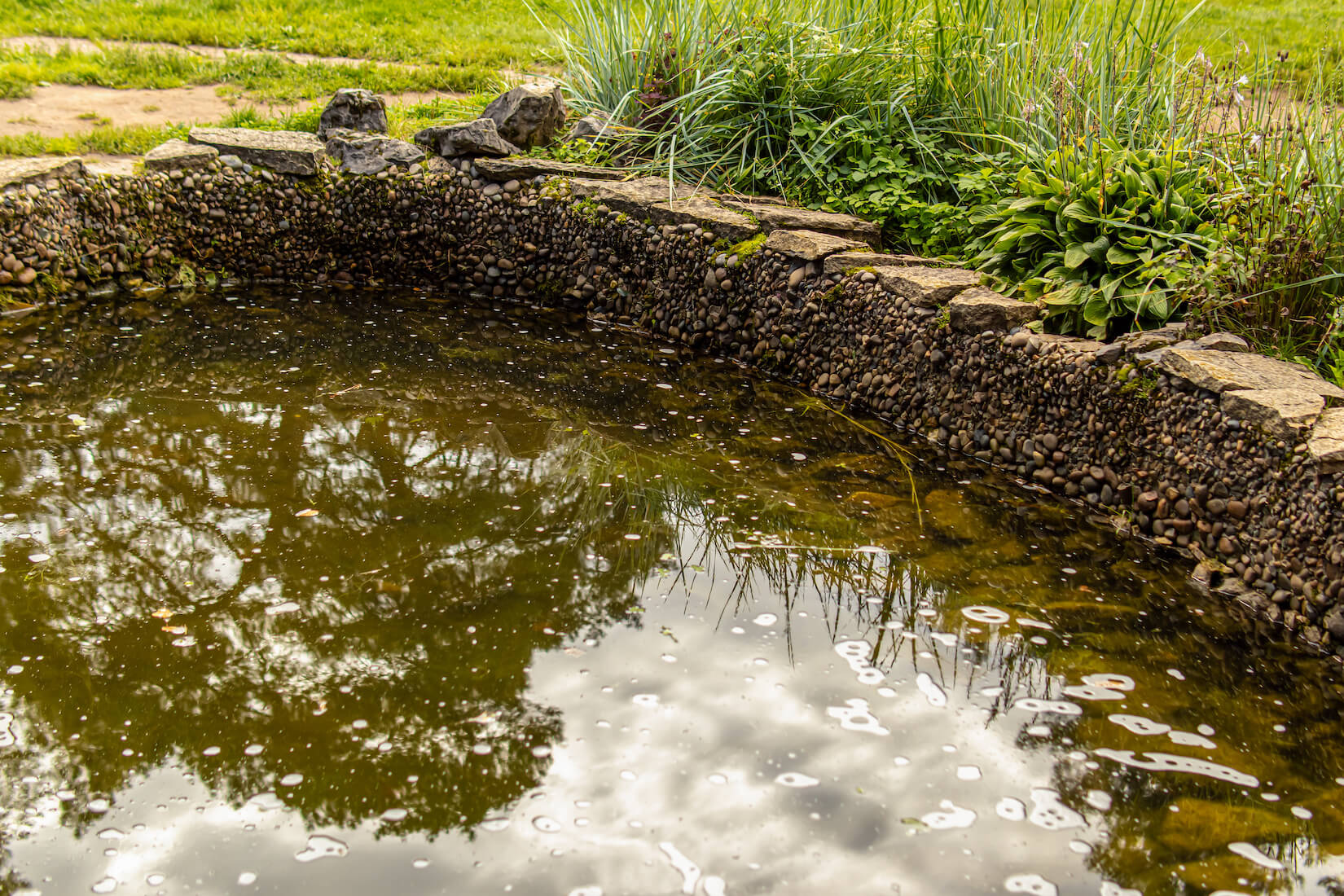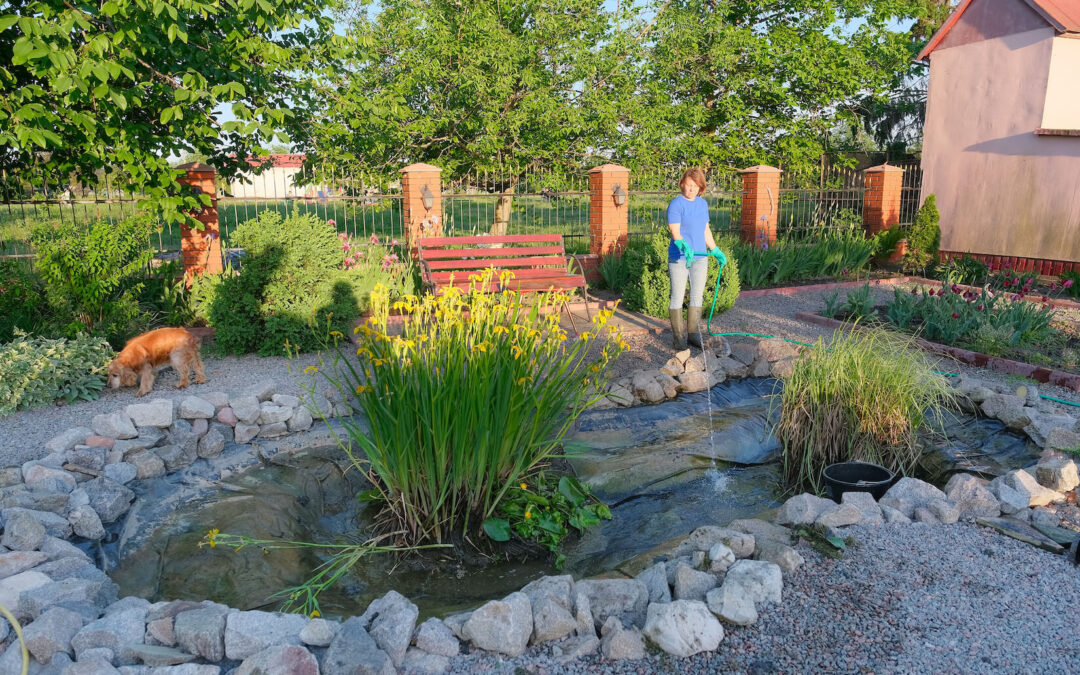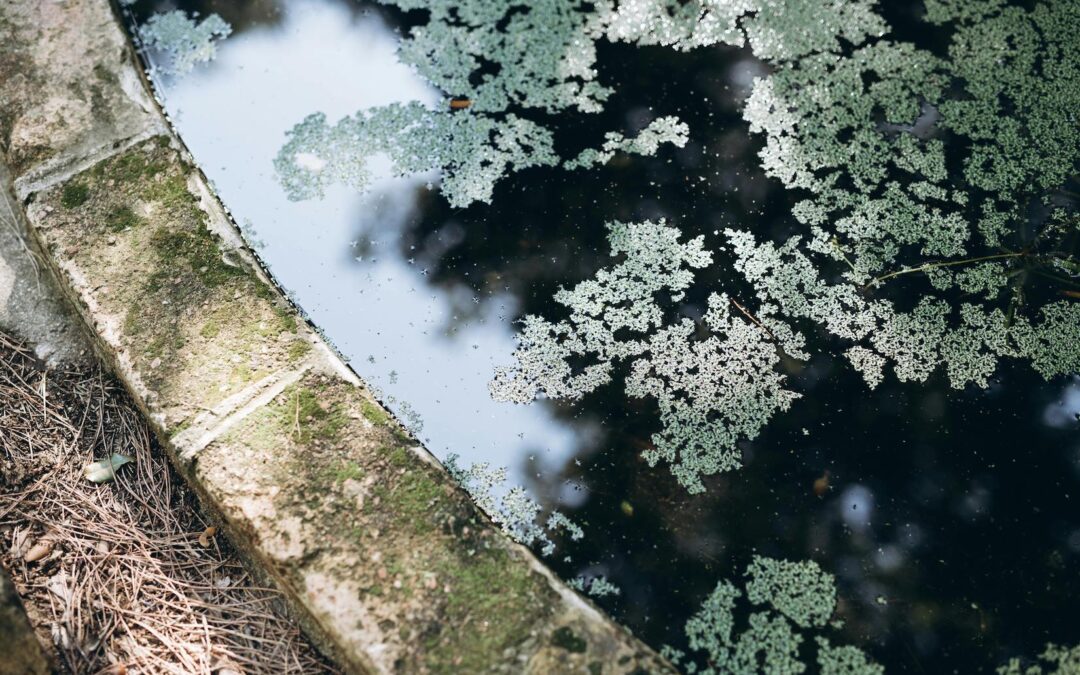A backyard koi pond, HOA water feature, or commercial retention basin should be a source of beauty and relaxation, not stress and health hazards. Yet when water stops moving, a pond can quickly turn into a murky, foul-smelling problem that affects residents, visitors, and even local wildlife. Understanding the dangers of stagnant water and the steps you can take to prevent it is essential for homeowners, property managers, and facility operators alike.
This comprehensive guide explores why ponds become stagnant, the risks that follow, and practical solutions for pond maintenance to keep your water feature clean, healthy, and compliant.
What Is a Stagnant Pond?
A pond is considered stagnant when its water circulation slows to the point that oxygen levels drop, debris collects, and biological activity stalls. Without fresh water entering and excess nutrients leaving, a once-healthy ecosystem becomes a breeding ground for algae, bacteria, and pests.
Common causes include:
- Failed or undersized pumps and filters
- Clogged skimmers or inlet pipes
- Excess leaf litter, lawn clippings, or runoff carrying fertilizers
- Overcrowded fish populations
- Shallow water depths that warm rapidly in summer
- Neglected maintenance schedules
Left unaddressed, stagnation sets off a chain reaction of problems that can escalate from cosmetic to costly, or even dangerous, within a single season.
Health Hazards of Stagnant Water
Mosquito Breeding Grounds
Mosquitoes lay eggs on still water surfaces. A pond with minimal flow provides the perfect nursery for larvae. Besides the nuisance factor, mosquitoes carry illnesses such as West Nile virus and, in some regions, Zika or dengue.
Harmful Bacteria and Parasites
Low oxygen and warm temperatures encourage the growth of pathogenic bacteria, including E. coli, and parasites that can infect humans, pets, and wildlife. Contact with or ingestion of contaminated water may lead to gastrointestinal illness, skin rashes, or ear infections.
Toxic Algal Blooms
Excess nutrients combined with heat and poor circulation can fuel harmful algal blooms (HABs). Some blue-green algae species release toxins that affect the liver and nervous system of animals and humans, making even brief contact hazardous.
Respiratory Irritants
As organic matter decays in oxygen-poor water, it releases hydrogen sulfide, the gas responsible for a “rotten egg” smell. Chronic exposure can irritate the eyes, nose, and throat, especially for residents with allergies or asthma.
Environmental and Property Risks
Fish Kills and Wildlife Decline
Stagnant ponds often suffer dramatic oxygen crashes at night or during abrupt weather changes, killing fish and deterring beneficial wildlife such as frogs, dragonflies, and birds. A single fish kill can require expensive cleanup and repopulation.
Vegetation Overgrowth and Shoreline Erosion
Excess nutrients cause invasive aquatic plants to flourish. Thick root systems trap sediment and change flow patterns, undermining banks and paths. Shoreline erosion jeopardizes landscaping and expensive hardscaping features.
Structural Damage
Ponds near foundations or walkways can overflow during storms if their outflow pipes are blocked by debris. Repeated flooding weakens concrete, asphalt, and retaining walls, leading to costly repairs.
Regulatory Compliance Issues
Unmaintained stormwater features can violate local ordinances or EPA regulations in Colorado and many municipalities. Property owners who let a retention pond fall out of compliance may face fines, stormwater fees, or mandatory remediation orders.
Economic Impacts of Neglect
- Declining property value due to poor aesthetics and perceived neglect
- Increased maintenance costs as problems compound (pump replacements, dredging, algae treatments)
- Higher insurance premiums or liability exposure if health hazards cause illness or injury
- Potential legal action from neighbors or HOA members over mosquito infestations or noxious odors
A stagnant pond can hurt the entire community’s market standing in upscale neighborhoods like Cherry Hills Village and Greenwood Village, where curb appeal weighs heavily on property values.
Early Warning Signs of Stagnation
- Water color shifts from clear to green, brown, or black
- Surface scum or thick mats of stringy algae
- Foul odors, especially on hot afternoons
- Sluggish or absent waterfall or fountain flow
- Excessive mosquito activity around dusk
- Fish gasping at the surface or clustering near inflow points
- Visible sludge buildup on the pond bottom
Identifying these red flags early allows you to intervene before the ecosystem collapses or regulations come into play.
Proven Solutions to Prevent and Correct Stagnation
Improve Circulation and Aeration
A properly sized pump should turn over the pond’s total volume at least once every one to two hours. Adding a waterfall, stream, or aeration bubbler increases oxygen and discourages mosquito larvae.
Upgrade Filtration
Mechanical filters remove debris, while biological media foster beneficial bacteria that consume excess nutrients. Ultraviolet (UV) clarifiers can further control single-cell algae that cause green water.
Control Nutrient Inputs
- Keep lawn fertilizers and pesticides away from pond edges.
- Install buffer plantings around the shoreline to trap runoff.
- Limit fish density to reduce waste.
- Avoid overfeeding: uneaten food decays quickly.
Regular Debris Removal
Skim leaves and floating debris weekly during peak seasons. Trim aquatic plants to maintain a balance between shade and open water.
Seasonal Cleanouts
Annual or biennial professional cleanouts remove accumulated sludge, inspect liners and plumbing, and reset the ecosystem before problems escalate.
Beneficial Bacteria and Natural Treatments
Applying beneficial bacteria or barley treatments can out-compete algae for nutrients, offering a chemical-free way to maintain clarity.
Professional Assessment and Maintenance Plans
For larger HOA ponds or luxury residential features, partnering with an experienced pond-care provider ensures pumps, filters, water chemistry, and shoreline structures are monitored year-round.
Long-Term Benefits of a Healthy, Circulating Pond
- Enhanced property aesthetics and increased resale value
- Healthier fish and aquatic plants
- Fewer mosquitoes and harmful bacteria
- Reduced risk of algae toxins and regulatory violations
- Lower lifetime maintenance costs compared to crisis-driven fixes
For luxury properties and community associations alike, proactive pond maintenance is an investment that pays continual dividends in beauty, safety, and peace of mind.
Don’t Let Your Pond Go Stagnant
Stagnant water is more than an eyesore. It’s a health hazard, a regulatory risk, and a drain on your budget. By recognizing early warning signs and implementing sound circulation, filtration, and cleaning practices, you can keep your pond sparkling, safe, and compliant.
Biolein specializes in comprehensive pond services across the Denver metro area, from deep sludge removal with hydrovac technology to custom filtration upgrades and seasonal maintenance plans. Whether you manage an HOA pond, own a decorative backyard water feature, or oversee a commercial retention basin, our experienced team can tailor a solution that fits your budget and sustainability goals.
Ready to protect your pond from stagnation? Contact Biolein today for a free on-site assessment and customized maintenance plan.
Biolein has become a trusted partner for hydrovac excavation, environmental waste management, environmental consultation for hazardous waste, and drainage solutions across Colorado and beyond. We’re not just an environmental services company in Denver — we’re the team you can count on to tackle the tough jobs and keep things running smoothly.





